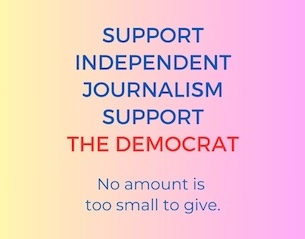
Nitin Sindhu VY | Mumbai
WEF Report Predicts Major Workforce Shifts by 2030: AI, Green Jobs, and Reskilling Take Center Stage
The World Economic Forum’s Future of Jobs Report 2025 reveals sweeping changes expected in the global labor market by 2030, driven by technological advancements, economic pressures, and climate action. Based on insights from over 1,000 employers representing 14 million workers worldwide, the report forecasts the creation of 170 million new jobs but also the displacement of 92 million roles, resulting in a net gain of 78 million jobs.
Key Trends Reshaping Work
1. Technology Dominates Job Growth
- AI, big data, and cybersecurity skills will be the top three fastest-growing competencies, fueling demand for roles like AI specialists, fintech engineers, and software developers.
- Robotics, automation, and digital access are expected to transform 60% of businesses, but clerical jobs (e.g., bank tellers, data entry clerks) face the steepest declines.
2. Economic Pressures Drive New Skills Demand
- Rising living costs and slower economic growth will heighten demand for resilience, flexibility, and creative thinking—skills critical for navigating uncertainty.
- Inflation and trade restrictions could displace 1.6 million jobs globally, pushing companies to offshore or reshore operations.
3. Green Transition Fuels Climate-Focused Roles
- Renewable energy engineers, environmental specialists, and electric vehicle experts rank among the top 15 fastest-growing jobs.
- Environmental stewardship enters the top 10 skills for the first time, reflecting corporate sustainability commitments.
4. Demographic Shifts Reshape Labor Markets
- Aging populations in high-income economies will boost healthcare jobs (e.g., nurses), while lower-income nations see growth in education roles (e.g., teachers).
Workforce Transformation Challenges
- 39% of workers’ current skills will be outdated by 2030, though reskilling efforts have slowed skill instability compared to 2023.
- 63% of employers cite skill gaps as the biggest barrier to adaptation, with 85% prioritizing upskilling. Yet, 11% of workers may miss out on retrining, risking unemployment.
- AI adoption will reshape hiring: 66% of firms plan to recruit AI-skilled talent, while 40% may cut roles automated by AI.
Corporate Strategies for the Future
- Wage increases: 52% of employers expect to raise pay to retain talent, tying compensation to productivity.
- Diversity and well-being: 83% of companies now have DEI initiatives, and 64% prioritize employee health to attract workers.
- Policy support: Governments are urged to fund reskilling programs, which employers rank as the most effective policy for talent development.
Regional and Sectoral Impacts
- Geoeconomic tensions disproportionately affect economies tied to U.S.-China trade, accelerating reshoring and demand for security-related skills.
- Frontline jobs (e.g., delivery drivers, construction workers) and care economy roles (e.g., nurses, counselors) will see the highest absolute growth.
Looking Ahead
“The next five years will test businesses’ ability to adapt,” said Saadia Zahidi, WEF Managing Director. “Investing in human capital—through upskilling, fair wages, and inclusive policies—will be non-negotiable for competitiveness.”
As automation and climate imperatives redefine industries, the report underscores a dual challenge: harnessing innovation while ensuring equitable workforce transitions.
Key Takeaways for Workers
✅ Prioritize AI, tech literacy, and green skills to stay competitive.
✅ Develop resilience and creativity to navigate economic shifts.
✅ Seek employers committed to upskilling and well-being.
Employer Action Items:
🔹 Scale reskilling programs to close talent gaps.
🔹 Align wages with productivity to retain top performers.
🔹 Integrate AI strategically without neglecting human-centric skills.
The clock is ticking—2030 is closer than it seems.
About The Author











